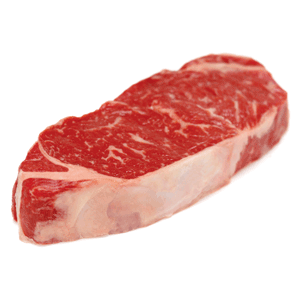Posts Tagged ‘ EU ’
Food Safety Alert: The Problem With Meat Glue
April 21st, 2011. By Hunter West
 Oh, you haven’t heard of meat glue? The food industry loves the stuff—and for good reason. Anything that would allow the morphing of a bucket of meat bits, like stewing beef for example, into what looks like a Grade A steak and commands a Grade A price at the counter, is akin to manna from heaven.
Oh, you haven’t heard of meat glue? The food industry loves the stuff—and for good reason. Anything that would allow the morphing of a bucket of meat bits, like stewing beef for example, into what looks like a Grade A steak and commands a Grade A price at the counter, is akin to manna from heaven.
To the untrained eye (meaning, you and me), it’s impossible to tell the difference. It looks like a steak. It grills like a steak. It tastes like a steak. But it’s not a steak, but rather chunks of meat that in a previous era would have been sold as stewing beef for a lot less than the kind of price a steak commands. But mix in some meat glue, roll it up and after six hours in the refrigerator, out comes a gelled roll that can be sliced into a series of lovely-looking, boneless steaks.
The potential for fraud is obvious. Beyond the deception, however, why did the European Union ban meat glue last year?
First, the back-story of what meat glue is. In fact, meat glue is actually an enzyme derived from thrombin and fibrogen, which is obtained from the blood plasma of swine and cattle. This is the stuff that causes blood to clot—and it also does a spiffy job, it turns out, of knitting small bits of meat together to appear like more expensive-looking steaks.
Is meat glue harmful? Well, the European Food Safety Authority gave meat glue a positive safety opinion in 2005, only to ban it five years later. And a butcher participating in a story Read the rest of this entry »
Archive by Category
- Accidents (24)
- Airlines (9)
- Asbestos Mesothelioma (262)
- Automotive (25)
- Celebrity (14)
- Class Action (84)
- Complaints/Comments (15)
- Consumer Fraud (84)
- Contest (2)
- Court of Public Opinion (5)
- Crazy Sh*t Lawyers See (61)
- Criminal Law (4)
- Defective Products (111)
- DePuy ASR Hip Recall (2)
- Discrimination (22)
- Drugs/Medical (248)
- Elder Care Abuse (4)
- Emerging Issues (462)
- Employment (54)
- Environment (52)
- Financial (28)
- Food Illness (15)
- Human/Civil Rights (4)
- Insecurities (5)
- Insurance (16)
- Intellectual Property (16)
- Internet/E-commerce (19)
- lawsuits (161)
- Lawyers (20)
- Lawyers Giving Back (43)
- Lex Levity (10)
- Personal Injury (106)
- Pleading Ignorance (53)
- Real Estate (2)
- Recall (6)
- Scam (3)
- Securities (13)
- Settlement (81)
- Tort Reform (2)
- Totally Tortelicious (81)
- Veterans (11)
- Whistleblower (9)